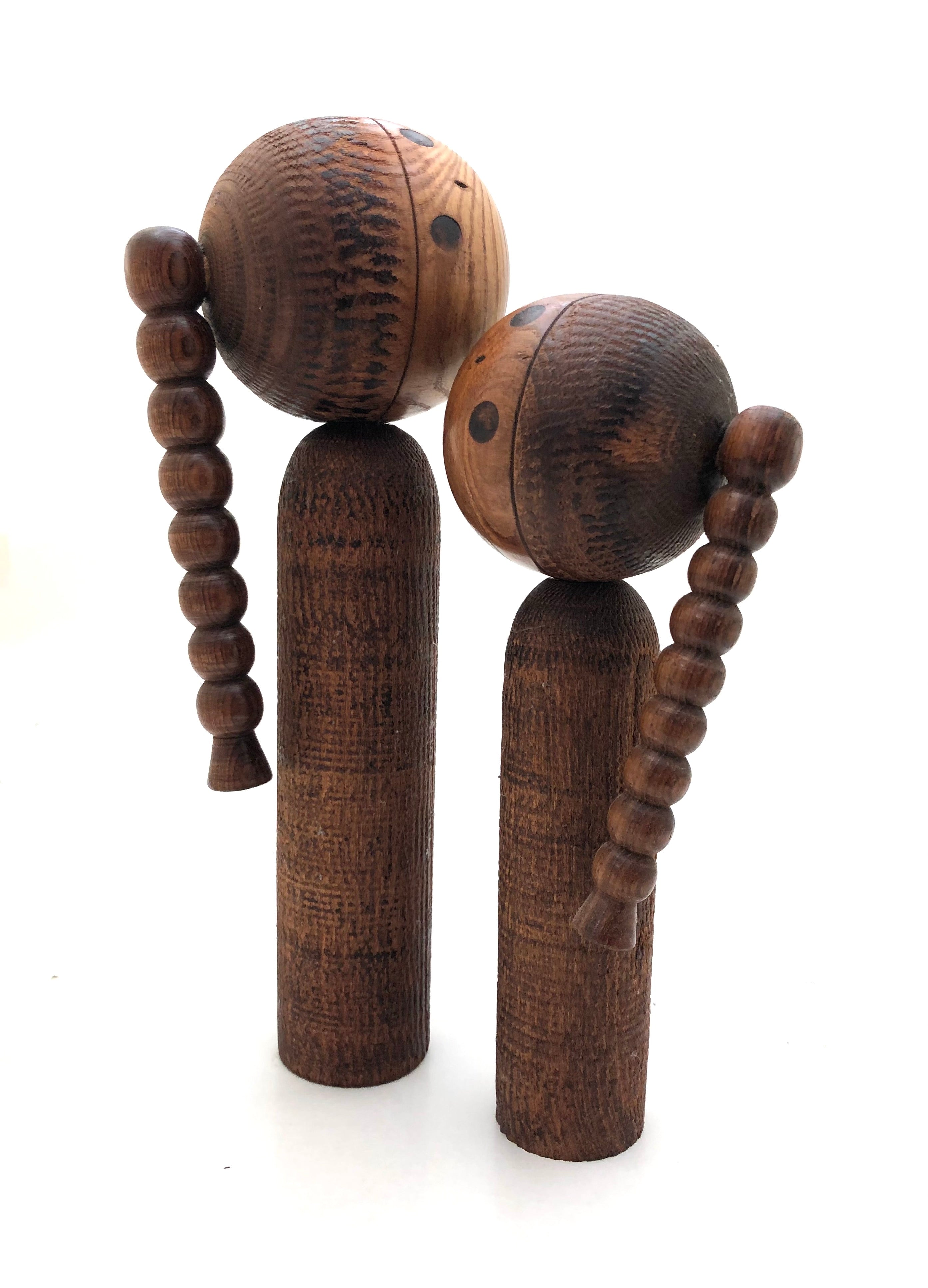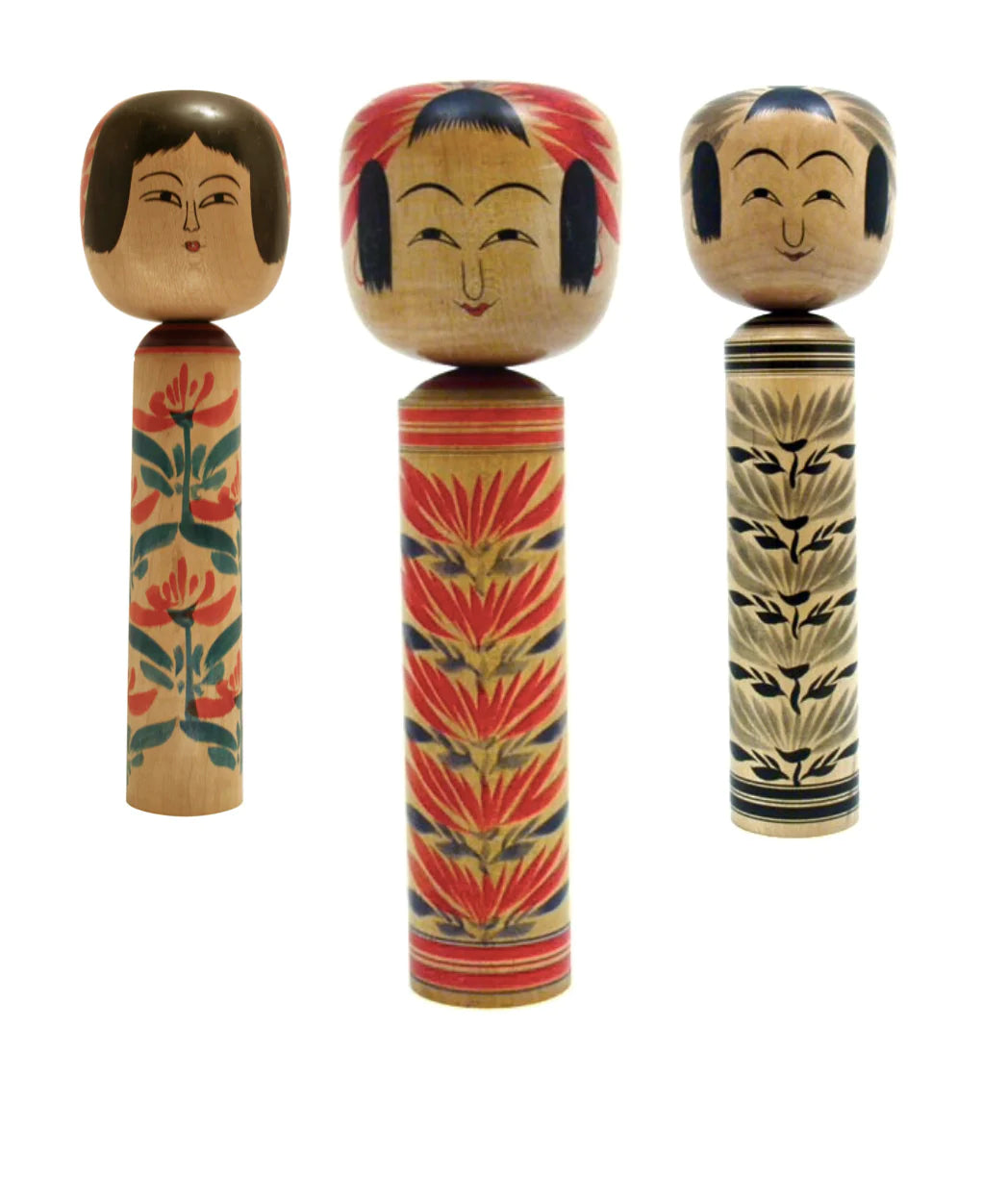Japanese Names, Signatures & Seals

In more recent times, an artist’s signature has become the standard, if you will, and nowhere is this more prevalent than it is on Kokeshi dolls. One of the very few, if not the only, folk-art doll creations bearing signatures, Kokeshi artists have been signing their works since the Kokeshi have become an important Folk Art for collectors around the world.
Japanese artists’ names, (surname first, given name second), appear as transcribed from the actual artwork or exhibition catalogues. The signatures of the artists on the dolls are ALWAYS unique, and artistically rendered. Artists and Kokeshi carvers may use one or several seals to sign their work. These seals many contain the artist’s real name in full or in part, or their artistic pseudonym. Other exotic scripts meant particularly for seal carving are generically called Zattaisho and include scripts of varying form. These impressions are also used by connoisseurs, who have purchased an antique artifact.
Finally, these impressions are different than Katakana. When writing is shown as part of the doll, for clarification, and identification, it could be showing the artist’s signature, maybe the studio and/or Onsen, but many, particularly the older dolls show the Name of the Doll which many collectors think is the artists name.



